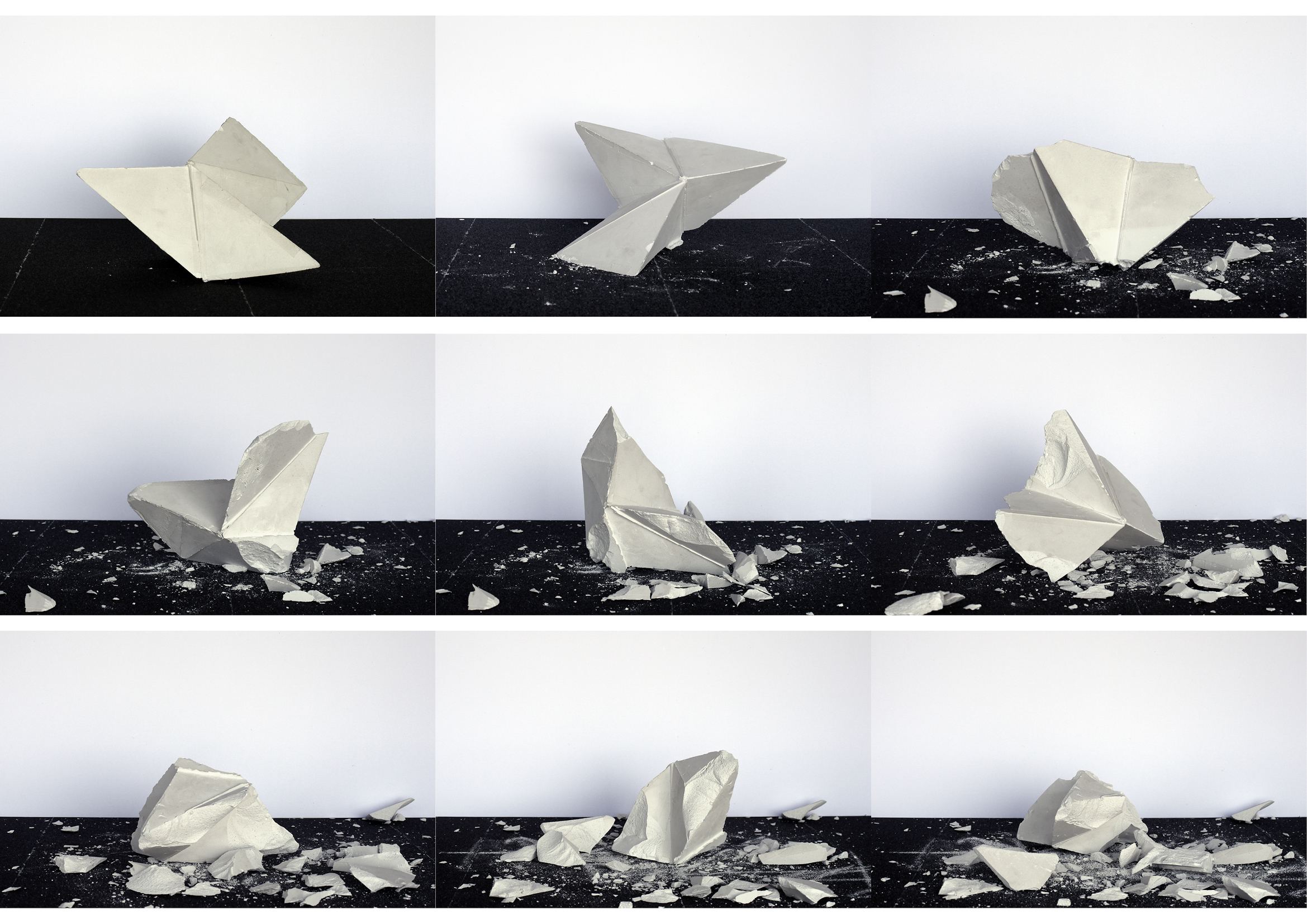engessados
A Thousand Roaring Beasts: Display Devices for a Critical Modernity
In his series, Lucas Simões reflects on the possible transformation of forms and spaces by manipulating and experimenting with material properties and inviting audiences to actively engage with the works. His interests naturally led him to fixate on Lygia Clark, who in the 1950s became one of the first artists to systematically work with relational objects. In 1959, the Brazilian artist signed the Nee-Concrete Manifesto, positioning herself against the over-rigidity of concrete geometric abstraction and in favour of expressive exploration and a return to subjectivity and the body. The following year Clark made her first Bicho or Creature, beginning a series that she would continue until 1964. These aluminum sculptures consisted of articulated moveable and folding planes that viewers were invited to manipulate. The Creatures were unveiled for the first time at the 1964 São Paulo Biennial, where Clark won the sculpture prize, and the series. was included in several major exhibitions, including the artist's retrospective at the Museo de Arte Moderna in Rio de Janeiro in 1963, the special gallery Lygia Clark e seus Bichos at the São Paulo Biennial that same year, a show at the London gallery Signals in 1965, and a survey of the last ten years of her career at the 1968 Venice Biennale.
The invitation to physically interact with the Creatures was based on a premise of active spectator participation that flew in the face of standard museum conservation and security protocols, as well as the rules of exhibition etiquette instilled in her audience. Thus, by displaying them as sculptures on pedestals rather than as relational objects, the sensory, constructive and subjectivizing potential of Clark's works was neutralized. This constraint has caused the Creatures to gradually become immobilized, to the point that, as Simões puts it, “they seem to be encased in a plaster cast”. Armed with this metaphor, the artist decided to reverse the process by creating a group of plaster sculptures based on the original Bichos and placing them on sandpaper so that viewers can manipulate them. The resulting friction will gradually wear down the pieces, and they will eventually disappear towards the end of the exhibition.
In his series, Lucas Simões reflects on the possible transformation of forms and spaces by manipulating and experimenting with material properties and inviting audiences to actively engage with the works. His interests naturally led him to fixate on Lygia Clark, who in the 1950s became one of the first artists to systematically work with relational objects. In 1959, the Brazilian artist signed the Nee-Concrete Manifesto, positioning herself against the over-rigidity of concrete geometric abstraction and in favour of expressive exploration and a return to subjectivity and the body. The following year Clark made her first Bicho or Creature, beginning a series that she would continue until 1964. These aluminum sculptures consisted of articulated moveable and folding planes that viewers were invited to manipulate. The Creatures were unveiled for the first time at the 1964 São Paulo Biennial, where Clark won the sculpture prize, and the series. was included in several major exhibitions, including the artist's retrospective at the Museo de Arte Moderna in Rio de Janeiro in 1963, the special gallery Lygia Clark e seus Bichos at the São Paulo Biennial that same year, a show at the London gallery Signals in 1965, and a survey of the last ten years of her career at the 1968 Venice Biennale.
The invitation to physically interact with the Creatures was based on a premise of active spectator participation that flew in the face of standard museum conservation and security protocols, as well as the rules of exhibition etiquette instilled in her audience. Thus, by displaying them as sculptures on pedestals rather than as relational objects, the sensory, constructive and subjectivizing potential of Clark's works was neutralized. This constraint has caused the Creatures to gradually become immobilized, to the point that, as Simões puts it, “they seem to be encased in a plaster cast”. Armed with this metaphor, the artist decided to reverse the process by creating a group of plaster sculptures based on the original Bichos and placing them on sandpaper so that viewers can manipulate them. The resulting friction will gradually wear down the pieces, and they will eventually disappear towards the end of the exhibition.

engessados, 2014
gesso sobre lixa
plaster and sanpaper
dimensões variáveis
variable dimensions
